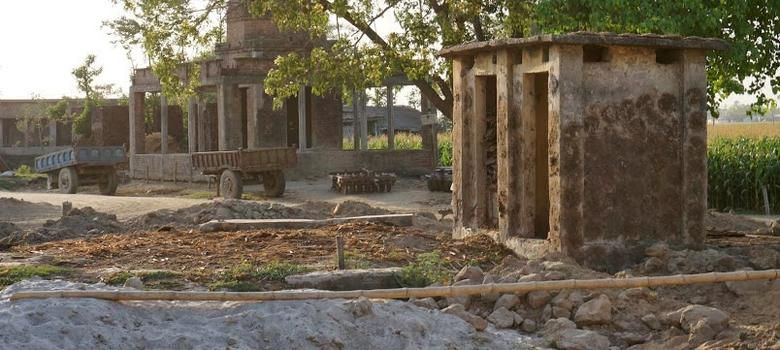Why community toilets won’t reduce open defecation in rural India
— Media — 3 min read
r.i.c.e.’s Payal Hathi use SQUAT and UNICEF/WHO data to explores how making community latrines won’t work for rural India. She also argues that promotion of latrine use, rather than latrine construction, is the best way to make progress on ending open defecation. Here is what she say's in the article.
What India needs is a Latrine Use Revolution.

Imagine that you are from rural Uttar Pradesh. You live in a kaccha house with your family, with your brother’s family living next door. You have defecated in the open your whole life. It’s something that you consider to be good, even healthy: going out in the open early in the morning gives you the chance to take a walk, get some fresh air, check on your fields, and meet your neighbors.
Then one day, your brother decides to build a latrine for his family. He invests a fair amount of money into it, making sure that it has a large pit and pucca walls. Only some members of his family use the latrine, like his pregnant daughter-in-law, since everyone else prefers to go outside. Although a latrine has been constructed just next door, that too in your brother’s home, you would never consider using it regularly. It might be alright to use it “in emergencies” but otherwise, you and your family continue to defecate in the open every day.
With the launch of the Swachh Bharat Mission today, there are many who are vigorously advocating community latrines as a real policy solution to ending open defecation in India. The idea is that if we can build a few toilets for use in rural communities, where close to 90% of India’s open defecation occurs, then people without latrines in their homes can use them to avoid going out in the open. But the story above is a common one. In addition to widespread lack of demand for latrine use and social fragmentation that makes the maintenance of shared latrines difficult, there is a clear discomfort in rural India around the idea of sharing latrines, making community latrines unlikely to work.
SQUAT survey
My colleagues and I at the Research Institute for Compassionate Economics recently conducted a survey of sanitation attitudes and practices in over 3,200 households in rural Uttar Pradesh, Madhya Pradesh, Rajasthan, Bihar, and Haryana (the SQUAT Survey). What we found is that people in rural north India very often do not use, and definitely do not share, their latrines.
There are a few important reasons why community latrines in rural India are unlikely to reduce open defecation. First, many people who have latrines in their own homes continue to defecate in the open, so it is misguided to assume that they would use a community latrine if it were available. In our survey, over 40% of households with a working latrine had at least one member who still defecates in the open. In fact, almost half of people who defecate in the open say that they do so because it is pleasurable, comfortable, or convenient. They are not interested in someone building them a toilet, and so a community toilet will not suddenly make them want to use one.
Wrong focus
Second, people in rural India do not share latrines. According to 2012 UNICEF/WHO data, while 20% of urban households without a household latrine used a shared or public toilet, only 5% of rural households did. Our survey similarly showed how infrequent latrine sharing is in rural India: less than 1% of households without a latrine use a community latrine. The discomfort with latrine sharing is demonstrated clearly by the fact that only 7% of households in our study that have a working latrine reported that non-household members also use it. We spoke to many households, like the one above, in which even brothers living next door to one another don’t share their latrines. Though it is possible that attitudes can change, sharing latrines is incredibly uncommon, suggesting how difficult it will be to make community latrines a palatable alternative to open defecation, if we can manage to convince people to want to use a latrine at all.
And third, it is naïve to simplify villages into homogenous communities that live in harmony and care for the wellbeing of all their neighbors. Rather, people are divided along lines of gender, religion, caste, and economic status that make cooperation complicated. Community or public toilets in urban India are difficult to keep in good condition, but still might be a good solution for the urban context. However, it is improbable to assume that people in rural India will use community toilets, coming together to maintain them so that they are available for those who need them. With such deep divisions, in an environment where latrine sharing is already so rare, why would entire villages share them?
What India needs is a Latrine Use Revolution. Community toilets are just another construction-focused solution to the problem of open defecation. As long as people continue to resist building and using latrines in their own homes, or in the homes of their family members, they will not use community latrines. Let’s shift the focus of the upcoming Swacch Bharat Mission to changing behavior, and convince every rural Indian that they want to use a latrine rather than go in the open. Only then will we truly make progress on making India free of open defecation by 2019.
You can also read the full article here